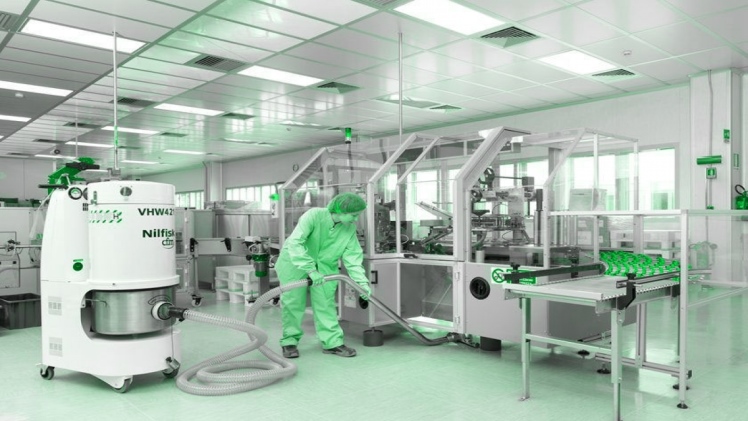Cleanroom particle counters are essential tools for maintaining cleanroom environments. These devices monitor airborne particles and ensure that the cleanroom meets the required cleanliness levels.
However, with so many types and models of particle counters available on the market, choosing the right one for your facility can be a daunting task. In this article, we’ll provide you with tips for choosing the right cleanroom particle counter for your facility.
Consider Your Cleanroom Classification
The first step in choosing the right particle counter for your facility is to determine your cleanroom classification. Cleanrooms are classified according to the number of particles allowed per cubic meter of air. The classification ranges from ISO Class 1 to ISO Class 9, with ISO Class 1 being the cleanest. Each cleanroom class has a corresponding standard for particle size and concentration.
It is crucial to select cleanroom particle counters that meet the standard for your cleanroom classification. For instance, if your cleanroom is an ISO Class 5, you will need a particle counter that can detect particles of 0.5 microns or larger.
If you need clarification on the cleanroom classification specifications, you can always seek expert advice from companies such as American Cleanroom Systems. They offer an RFQ form that allows you to request a quotation in just 48 hours, making the process of selecting the right particle counter for your facility hassle-free.
Choose the Right Particle Size Range
Particle counters detect and count particles of different sizes. The size range of particles that a particle counter can detect depends on the type of sensor used. It is important to choose a particle counter that can detect particles of the appropriate size range for your application.
For example, if your facility manufactures pharmaceutical products, you may need a particle counter that can detect particles as small as 0.3 microns. However, if your facility manufactures large industrial products, a particle counter that can detect particles of 1 micron or larger may be sufficient.
Consider the Sampling Flow Rate
The sampling flow rate is the rate at which air is drawn into the particle counter for measurement. The sampling flow rate is usually expressed in liters per minute (LPM). The appropriate sampling flow rate depends on the size of your cleanroom and the number of sampling locations.
It is important to select a particle counter with a sampling flow rate that can accommodate the size of your cleanroom and the number of sampling locations. If your facility has a large cleanroom, you may need a particle counter with a high sampling flow rate to cover all the sampling locations adequately.
Evaluate the Data Management System
When it comes to cleanroom particle counters, having a reliable data management system is crucial. Such a system should be easy to use, efficient, and capable of generating accurate and detailed reports. Additionally, it should have the capacity to store and analyze data over an extended period.
To ensure that you choose the right particle counter, it’s crucial to evaluate the capabilities of its data management system. Consider factors such as user-friendliness, data storage, analysis, and report generation. Make sure that the particle counter’s data management system meets the specific needs of your facility and is compatible with any existing data management systems.
A good data management system is essential for keeping track of particle levels in your cleanroom over time and can help identify trends or potential issues before they become major problems. It is, therefore, critical to invest in a particle counter with a reliable data management system that can effectively manage, store, and analyze particle data.
Consider the Calibration and Maintenance
To ensure the accuracy and reliability of particle counters, regular calibration and maintenance are essential. Calibration involves adjusting the particle counter to produce accurate readings, and it needs to be done at regular intervals to maintain consistency.
On the other hand, maintenance involves keeping the particle counter in good working condition by cleaning, inspecting, and replacing parts when necessary.
When choosing a particle counter, it’s important to consider its calibration and maintenance requirements. Look for a particle counter that is easy to calibrate and has clear instructions for doing so.
Additionally, consider the maintenance requirements of the particle counter, including how often it needs to be serviced and what kind of routine maintenance it requires. Choose a particle counter with a good track record of reliability, as this will ensure that it requires less frequent maintenance and calibration.
Neglecting calibration and maintenance can result in inaccurate readings and a loss of confidence in the particle counter’s reliability. Therefore, it’s crucial to invest in a particle counter that is easy to calibrate and maintain and to keep up with the recommended calibration and maintenance schedule to ensure that it performs accurately and reliably over time.
In conclusion, choosing the right cleanroom particle counter for your facility is essential for maintaining the required cleanliness levels. When selecting a particle counter, consider your cleanroom classification, the particle size range, the sampling flow rate, the data management system, and the calibration and maintenance requirements. By considering these factors, you can select the particle counter that best suits your facility’s needs.

